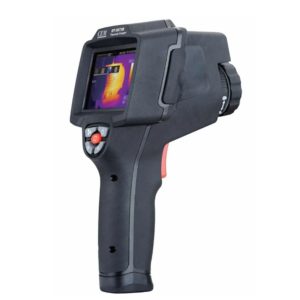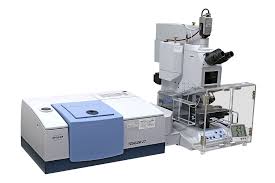Description
A thermocycler automates the rapid and precise temperature changes required for the PCR (Polymerase Chain Reaction) process. PCR is a method that mimics DNA replication in vitro, amplifying a specific DNA segment using a DNA polymerase enzyme, primers, nucleotides (dNTPs), and a template DNA strand. The thermocycler performs a series of heating and cooling cycles that enable the enzymatic reactions essential for DNA replication.
The main steps of a standard PCR cycle facilitated by the thermocycler are:
1. Denaturation (~94–98°C):
The double-stranded DNA melts open to form single strands, separating the target DNA into individual templates.
2. Annealing (~50–65°C):
Short DNA primers bind (anneal) to their complementary sequences on the single-stranded template DNA.
3. Extension (~72°C):
The thermostable DNA polymerase (commonly Taq polymerase) synthesizes a new DNA strand by adding nucleotides to the primers.
These three steps constitute one cycle, and the process is repeated for typically 25–40 cycles, exponentially amplifying the DNA region of interest.
—
Features of a Modern Thermocycler:
Programmable thermal block: Allows precise control over the temperature and duration of each step.
Multiple block formats: Accommodates various tube or plate sizes (e.g., 0.2 mL tubes, 96-well plates).
Gradient function: Allows optimization of annealing temperatures across a range in a single run.
Heated lid: Prevents condensation on the lid and avoids sample evaporation.
Touchscreen interfaces and USB/data export: For easy programming, monitoring, and documentation of PCR protocols.
Compact and portable models: Available for field or point-of-care applications.
—
Applications:
Medical diagnostics: Detecting infectious diseases (e.g., COVID-19, HIV, TB), genetic disorders, and cancer mutations.
Forensic science: DNA fingerprinting and identification from crime scene samples.
Molecular biology research: Cloning, gene expression analysis, mutagenesis.
Agriculture and food safety: Detection of genetically modified organisms (GMOs), plant and animal pathogens.
Environmental monitoring: Identifying microbial contaminants in water, soil, and air.
—
Advantages:
High sensitivity and specificity for target DNA sequences.
Rapid amplification (results in hours).
Requires only minute amounts of starting DNA.
Highly programmable and customizable for different protocols.
—
Limitations:
Requires high-quality reagents and precise conditions to avoid contamination or non-specific amplification.
Cannot distinguish between live and dead organisms (in diagnostic use).
Equipment and reagents may be cost-prohibitive in some settings.
—
In conclusion, the thermocycler is an indispensable tool in modern biology and medicine. It provides the foundation for many downstream applications, including sequencing, cloning, and molecular diagnostics, and continues to evolve with advancements like real-time PCR (qPCR), digital PCR, and high-throughput systems, which further enhance its capabilities and impact across scientific disciplines.






Reviews
There are no reviews yet.